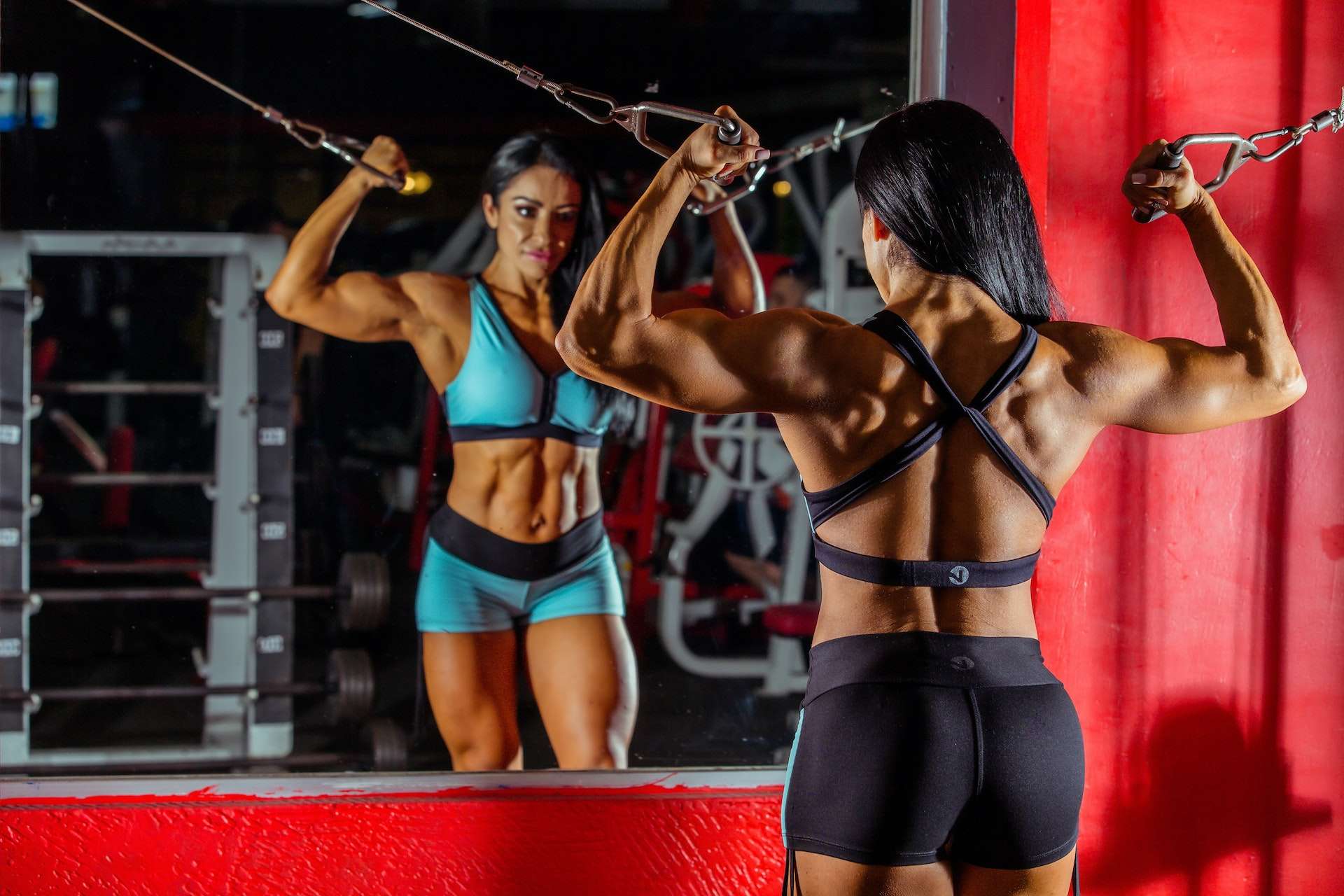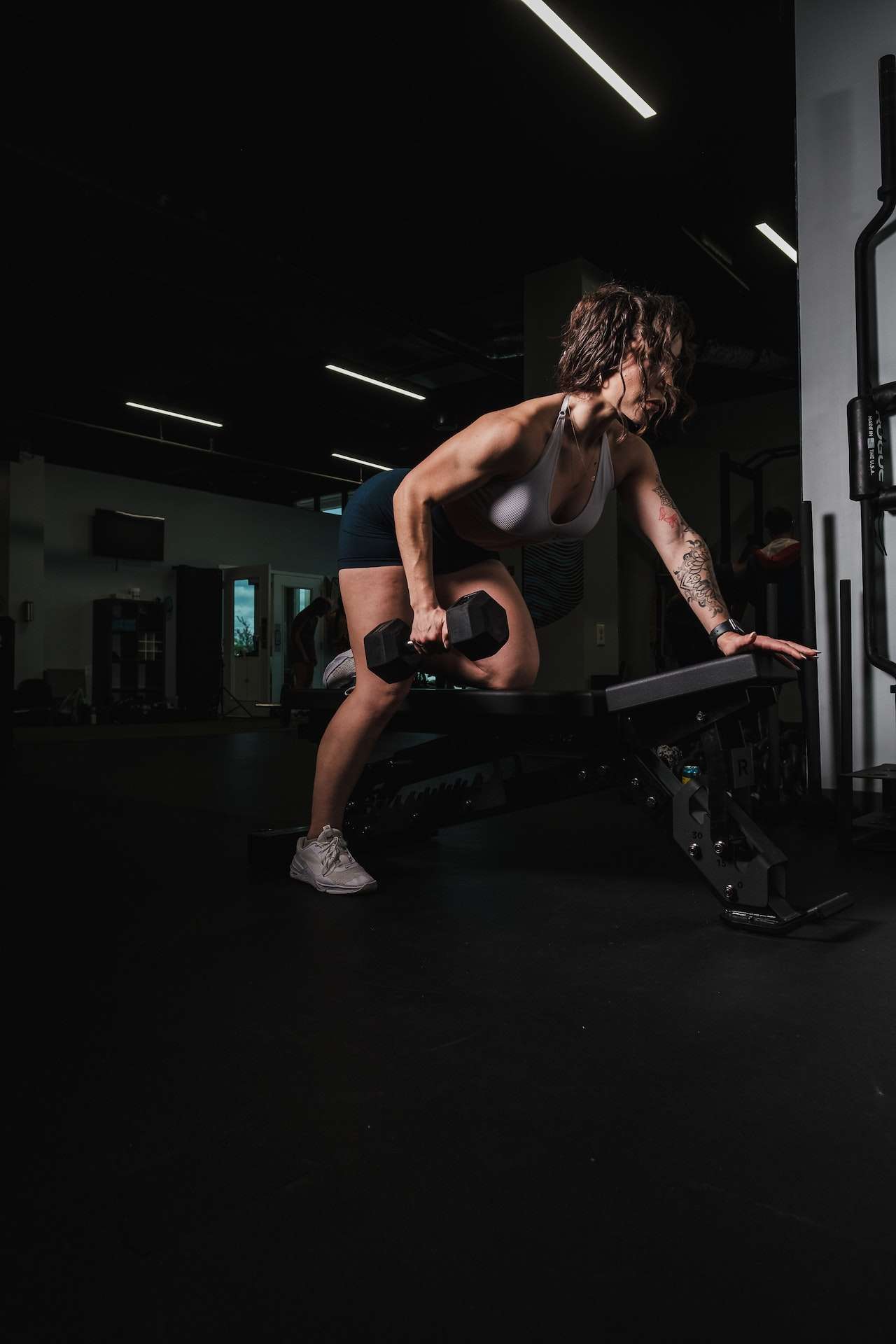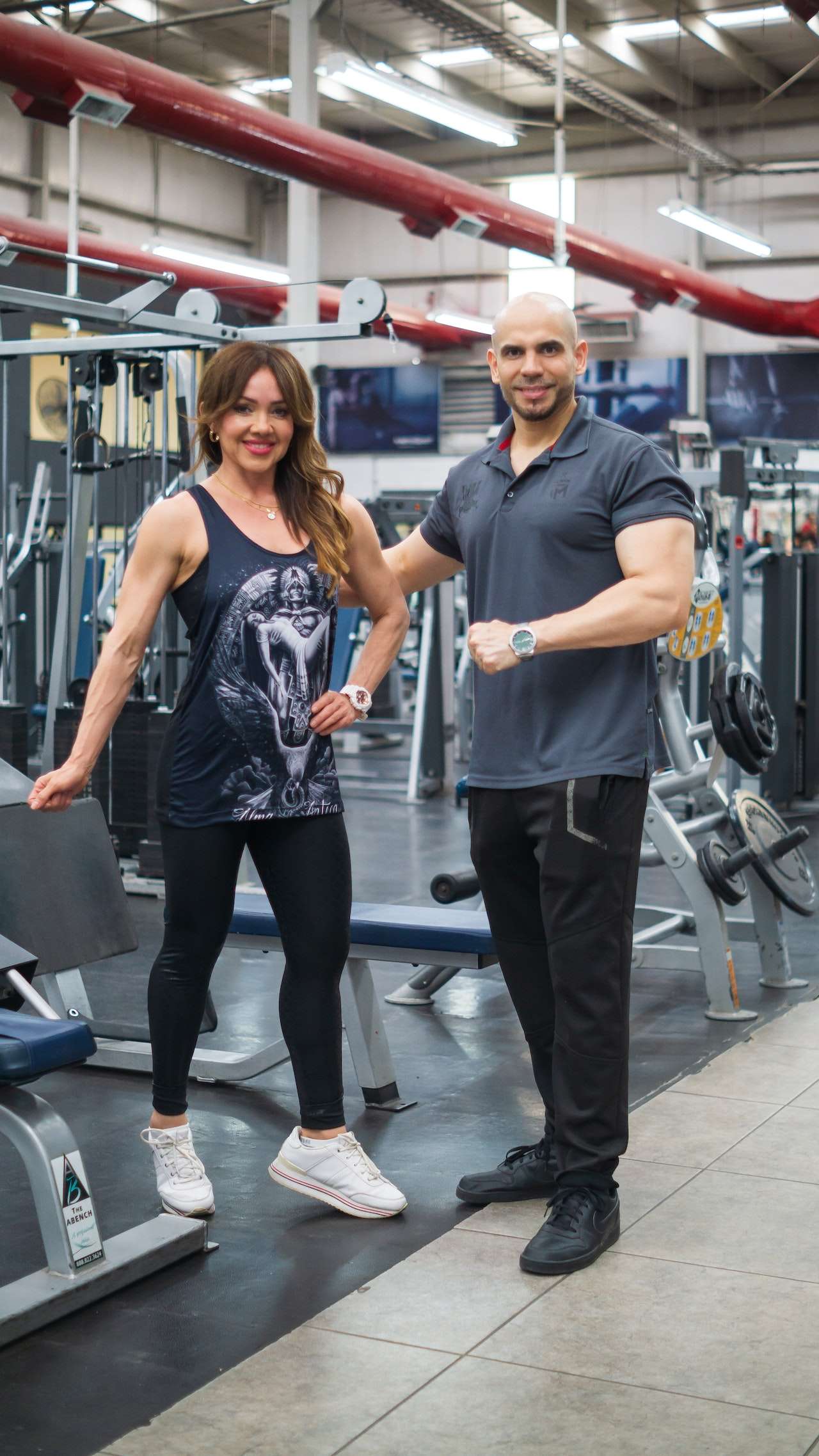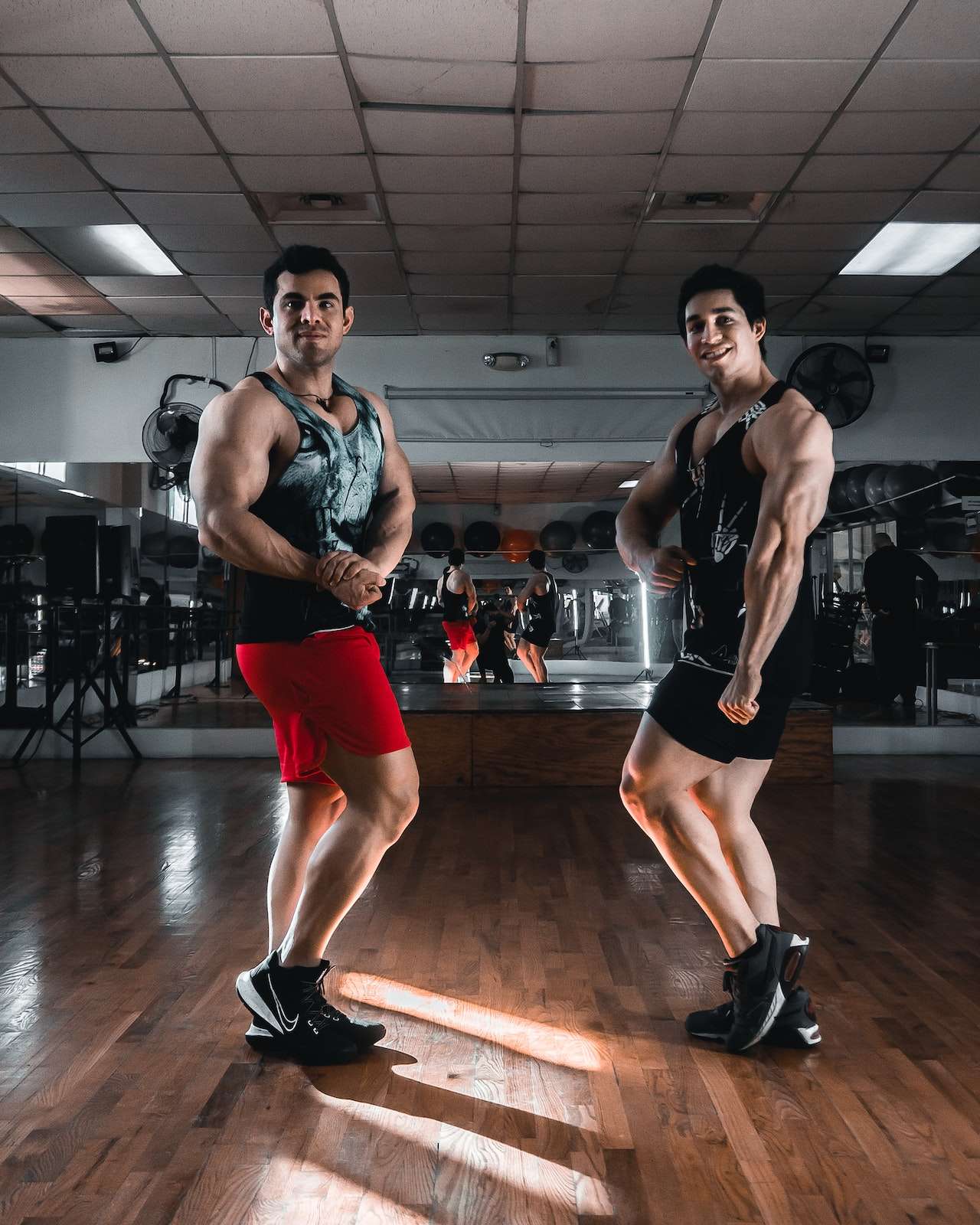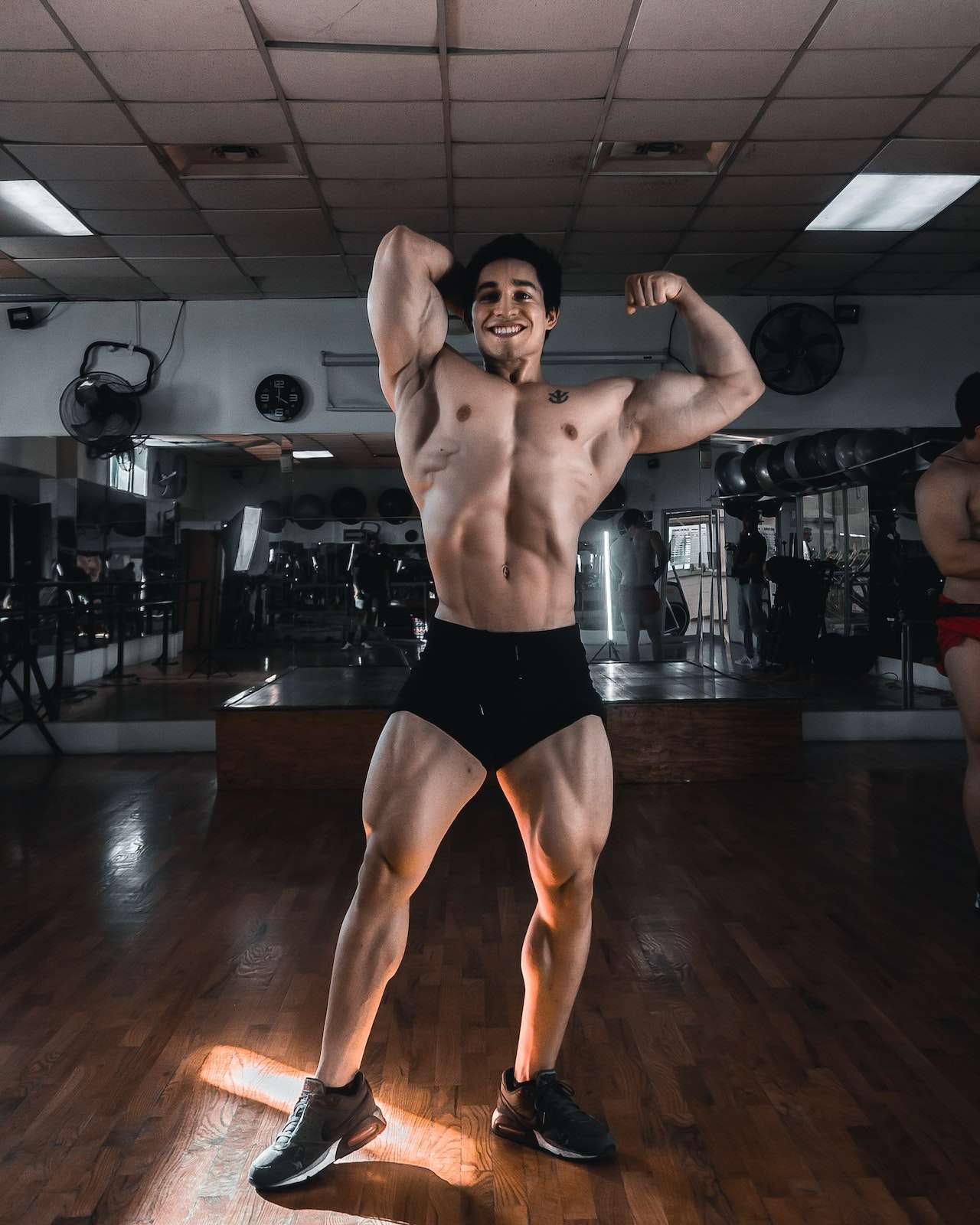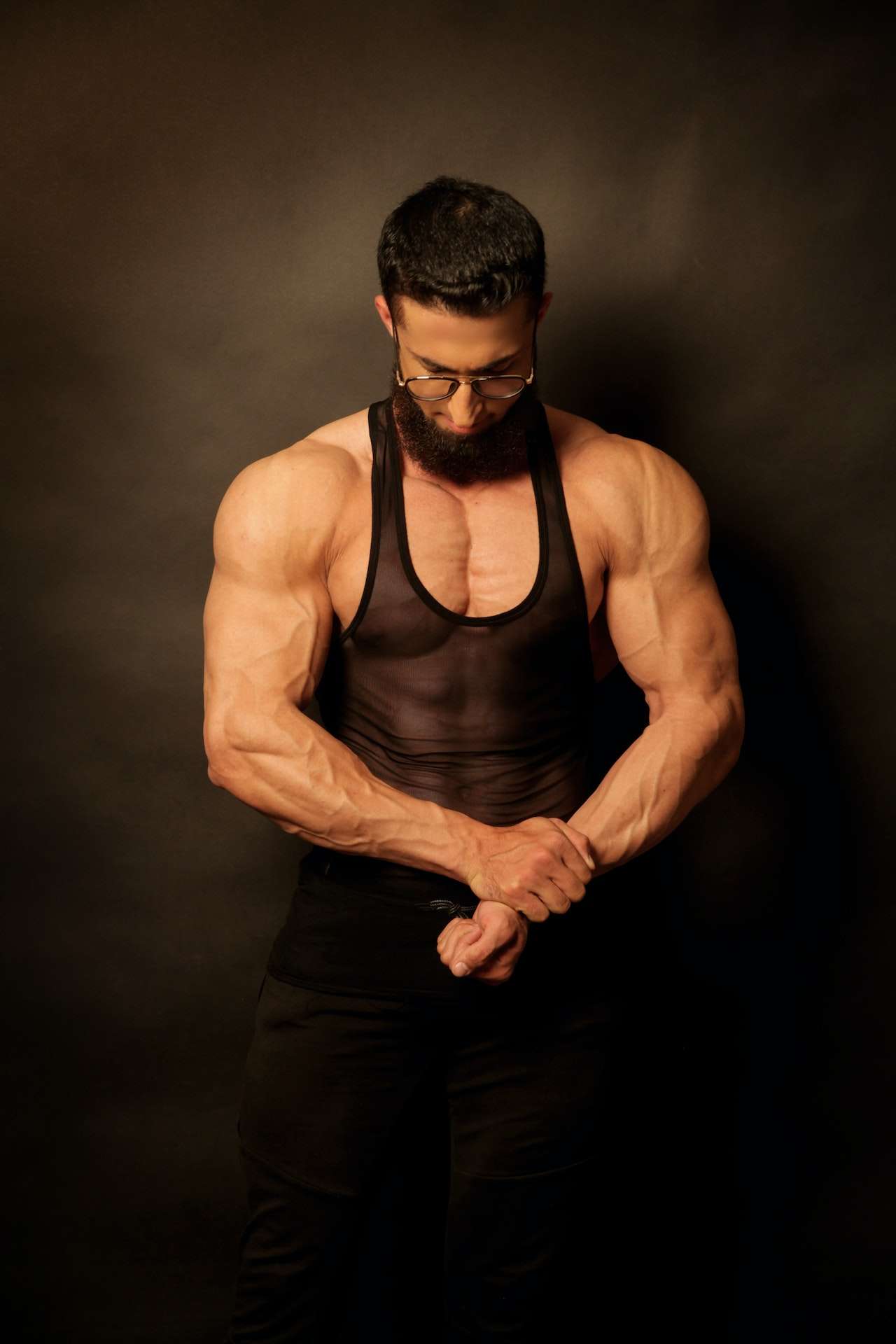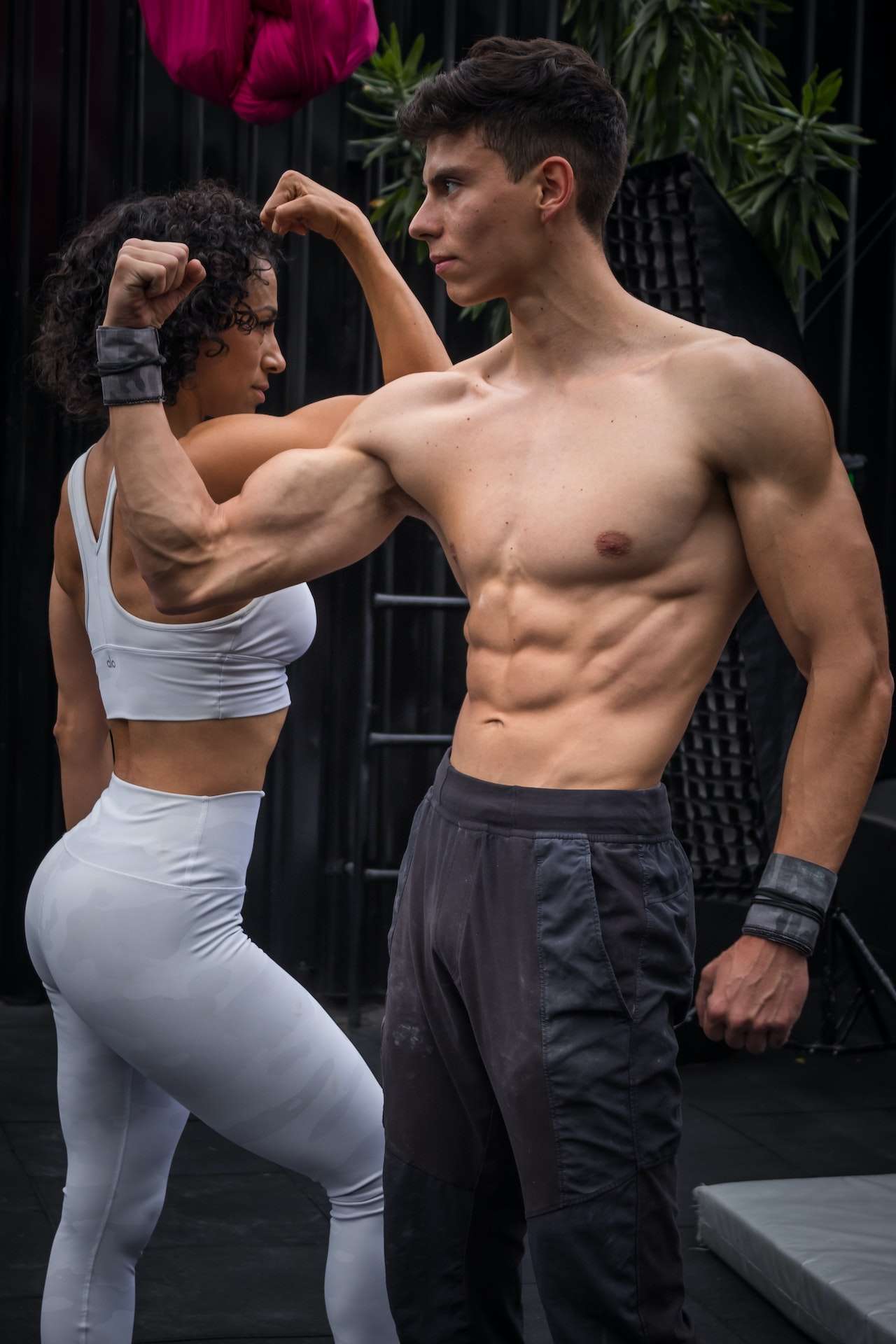|
Are you looking to take your bodybuilding to the next level? Have you ever wondered how bodybuilding competitions for women differ from those for men? If so, you’ve come to the right place. In this article, I’ll explore the differences between these two types of competitions and share why female bodybuilders are becoming more popular than ever. The world of competitive bodybuilding is complex and thrilling. It takes particular strength and commitment to enter a competition with both men and women can. However, some critical differences between male and female bodybuilding competitions separate them from each other. There is much to consider, from judging criteria to required poses, when competing in either event. Read on if you’re curious about what separates male and female bodybuilding contests! With a bit of knowledge about the unique challenges faced by each gender in this exciting sport, you can decide which event is best suited for you. So don’t wait any longer – let’s delve into the fascinating world of competitive bodybuilding!
Table of Contents
show
Differences In Muscle Mass And Body CompositionAs one dives into bodybuilding, one will discover the various types of female bodybuilding competitors engage in. From classic poses to figure competitions, each type showcases the hard work and dedication required to achieve a physique worthy of competition. With careful dieting and training, many different bodybuilding shapes can be accomplished. While bodybuilders may need to follow certain bodybuilding foods for optimal results, there are still basic bodybuilding exercises for each category.
Female bodybuilders are typically judged on muscle mass and body composition compared to men’s competitions. There is a greater emphasis on muscle definition and proportions, with less on raw power and sheer size. Women’s divisions often have weight classes that differ from men’s competitions. This allows for more variety among competitors and creates an even playing field when competing with other individuals in their weight class. Differences In Weight Classes And DivisionsFrom bodybuilding shows to competitions, it’s clear that there are differences between male and female bodybuilding competitions. One of the most notable differences is in weight classes and divisions. For men, bodybuilding competitions typically have three weight classes – light-heavyweight, middleweight, and heavyweight – while women usually have four: lightweight, middleweight, heavyweight, and super heavyweight. The number of divisions also differs between men’s and women’s bodybuilding competitions. Men usually have just one division with no age requirement or age categories, while women often have two divisions – open (17 years old or older) and masters (35 years old or older). Additionally, some categories of competition are strictly limited to either men or women, such as bikini fitness for women or classic physiques for men. These distinctions point to the fact that many types of bodybuilding programs are tailored specifically to the needs of both male and female athletes. Each gender may use different bodybuilding drugs and steroids to achieve a desired level of muscularity for their respective weight class or division. Moreover, what is considered the most prominent bodybuilding competition may vary depending on which gender is competing. Then, weight classes and divisions play an important role in distinguishing between male and female bodybuilding competitions – setting the stage for various competition levels within each category. This is an integral part of understanding the differences between these two facets of the sport – something we will explore further when looking at differences in judging criteria. Differences In Judging CriteriaRegarding bodybuilding competitions for women, some significant differences set them apart from those for men. These differences are worth noting, from the types of female bodybuilding competitions to the different bodybuilder types and even the kind of body build an athlete with a low BMI has. Let’s look at the types of female bodybuilding competitions available. There are four main types of female builds: natural, bikini, physique, and figure. Natural bodybuilders must keep their BMI at or below 30%, while bikini athletes must stay under 25%. Physique competitors must have a leaner look, while figure athletes must display an hourglass shape. These differences in weight classes make for some exciting matchups! In addition to weight classes, there are different judging criteria for each type of competition. For instance, natural bodybuilding is judged on muscularity, symmetry, and definition, while bikini competitions focus more on presentation and overall physical fitness.
Physique competitions consider muscle tone, shape, and mass compared to height and weight ratios. At the same time, figure events prioritize proportionality between upper and lower bodies, muscle tone, and definition. With such varied judging criteria across different bodybuilding competitions, it’s no wonder many female athletes choose this sport! This sport has become popular among women, from the number of female bodybuilders competing today (currently over three million worldwide) to the unique ways they can express their strength through different events. Whether looking at the different types of bodybuilding for females or considering how many female bodybuilders are out there – there is no doubt that this sport is growing in popularity every day. It’s a fantastic way for women everywhere to simultaneously show off their physical strength and beauty! With an array of options for female competitors regarding weight classes and judging criteria, it’s easy to see why so many women enjoy competing in these events. Now let’s look at how posing routines differ between male and female competitors… Differences In Posing Routines“The early bird catches the worm,” they say, and the same applies to bodybuilding competitions. Different bodybuilding competitions require other posing routines for male and female competitors – a critical difference that aspiring bodybuilders must be aware of. Regarding bodybuilding shows, there are many competition classes for men and women. Men compete in categories such as classic physique, men’s physique, and bodybuilding. Women compete in fitness, figure, bikini, and physique divisions. While the types of bodybuilding steroids used by male contestants are the same for female contestants, the posing routines can vary significantly based on the division being competed in. For example, bodybuilding poses will differ from bikini poses due to the requirements of each division. The judges look for different attributes in each type of pose. Generally speaking, female competitors will be judged more on their aesthetics, while male competitors are judged more on their muscle development and conditioning levels. It is essential to understand these differences to excel in your chosen division or class of competition. At a show or event, there are variations between genders regarding the number of competitors allowed in each division or class; understanding this can help you prepare accordingly to have the edge over your opponents. Differences In The Number Of CompetitorsParticipation in bodybuilding competitions has grown recently, with events for both men and women. While the fundamental sport remains the same, there are some notable differences regarding the number of competitors. In particular, female bodybuilders often have fewer divisions than their male counterparts. The most common bodybuilding shows are physiques, bikinis, and figure shows. Each category tends to focus on a different type of female physique. At the same time, a bikini show is designed to highlight curves and femininity; a figure show focuses more on muscularity and athleticism. These distinctions can also be seen in other types of bodybuilding divisions—such as men’s classic physiques or women’s bodybuilding—which require competitors to display different body shapes and levels of body awareness.
While there are hundreds of smaller-scale bodybuilding competitions across the country each year, the most significant event for both men and women remains the annual Olympia competition. This prestigious event draws hundreds of competitors worldwide who compete in various weight classes for top honors in their disciplines. For women specifically, numerous natural-only tournaments occur throughout the year, providing an alternative option for those wanting to compete without using performance-enhancing drugs or steroids. With so many options available, female participants now have more opportunities than ever to showcase their talents at all levels of competition. Differences In The Prevalence Of Steroids And Other Performance-Enhancing DrugsRegarding bodybuilding competitions for women and men, one significant difference is the prevalence of steroids and other performance-enhancing drugs. Different types of bodybuilding require different kinds of steroids and supplements. For instance, some bodybuilders opt for anabolic steroids to increase muscle mass, while others prefer natural supplements such as creatine or whey protein. Some bodybuilders even combine both methods to maximize their results. It’s important to remember that each type of steroid and supplement has risks and side effects. For example, anabolic steroids can cause high blood pressure, infertility, depression, and liver damage. Natural supplements are generally considered safer but must be taken responsibly to avoid potential health issues. Moreover, not all steroids are created equal – some brands have a greater risk of causing severe side effects than others. The type of drug a bodybuilder uses often depends on the goals they have set for themselves and their overall budget. Professional athletes tend to use higher-quality drugs than amateur competitors due to their higher cost. There is also a debate around natural bodybuilders taking steroids – while many don’t condone it, some believe it can be done safely if done responsibly. It’s ultimately up to individual athletes and their coaches when deciding which drugs or supplements are best suited for them, given their goals and financial situation—as with any performance-enhancing medication or supplement. Knowing your limits is critical to prevent potential health problems down the road. With this information in mind, let’s look at the differences between men’s and women’s bodybuilding competitions regarding sponsorship and prize money. Differences In Sponsorship And Prize MoneyBodybuilding competitions for women have come a long way in terms of sponsorship and prize money. In the past, female bodybuilders have been significantly underfunded compared to their male counterparts. Still, today there is an increasing amount of attention and resources devoted to the sport, with many sponsors now offering substantial rewards for winners of female competitions.
Here are some ways in which women’s bodybuilding contests differ from men’s in terms of sponsorship and prize money: 1. Women’s bodybuilding generally receives less overall sponsorship than men’s. 2. There is often a difference in the types of sponsors involved, with men’s competitions often featuring more big-name brands than those aimed at women. 3. Prize money can vary significantly between male and female bodybuilders, with higher amounts often given to male competitors in professional competitions. 4. Women’s bodybuilding contests may also feature incentives such as product endorsements or special awards for top performers. Overall, it is clear that although there has been a noticeable increase in investment in female bodybuilding over recent years, there still exists a disparity between the level of funding available for male and female athletes competing at the same level. This lack of parity highlights the need for further investment into professional and amateur female bodybuilding competitions to ensure that all athletes receive fair recognition for their hard work and dedication. Moving forward, we must continue striving towards more equitable opportunities for male and female bodybuilders so that everyone can benefit from increased media coverage, sponsorship opportunities, and competitive prize money. Differences In Media CoverageRegarding media coverage of bodybuilding competitions for women, there is a stark difference from those for men. It’s a double standard – while male bodybuilders are often featured in magazines, movies, and television shows, female bodybuilders rarely get the same recognition. There are a few exceptions, such as Ronda Rousey and Bev Francis, but overall they get much less attention than their male counterparts. Here are 3 points to illustrate this further: Firstly, most bodybuilding magazines only feature male athletes on their covers. While some may include female athletes in editorial content inside the magazine, they still need to be featured on the surface. Secondly, when it comes to movies and TV shows about bodybuilding or featuring bodybuilders as characters, most have been about men, with very few focusing on female athletes. Lastly, even when female bodybuilders get recognized in mainstream media outlets such as newspapers or online publications, it tends to focus more on their appearance than their sporting accomplishments. This lack of media coverage for women’s bodybuilding impacts how people view these athletes and the sponsorship opportunities and prize money available to them. With this being said, there is still work being done by individuals and organizations alike to try and promote more parity between male and female athletes within the sport. Differences In The History And Evolution Of Women’s BodybuildingBelieve it or not, the history of women’s bodybuilding is relatively recent compared to the long-standing tradition of men’s bodybuilding. Women were excluded from competing in competitions such as Mr. Olympia for many years and only recently have been allowed to participate. This has led to an evolution in the types of bodybuilding classes and different kinds of bodies gym that is now accepted and celebrated in female bodybuilding competitions. To start with, several different types of bodybuilding physiques are seen among female competitors, including: * Classic Physique – which emphasizes symmetry, shape, and size * Fitness Physique – which focuses on the muscular definition and toning * Figure Physique – which requires fitness combined with artistry * Bikini Physique – emphasizes a lean physique with minimal muscle tone * Bodybuilding Physique – requires extreme muscular definition and size.
Additionally, each class requires particular exercises, diets, and supplements that target different goals, varying depending on the developed physique. For example, a classic physique competitor will focus on weight lifting, while a figure competitor might focus more on cardio exercises to achieve their desired look. As for diets and supplements, these too vary greatly depending on the type of physique being developed; some require intense calorie restriction, while others require high-protein foods or specialized supplements to help build muscle mass quickly. Overall, with all these differences between male and female bodybuilders – from the physiques they aim to develop to the training they do – it’s clear that there is much more variety in women’s bodybuilding than there is among men’s. The increased acceptance of female bodybuilders has resulted in greater diversity within this sport, opening up more opportunities for aspiring athletes who want to pursue this field professionally. Differences In The Training And Preparation For CompetitionsTraining for women’s bodybuilding competitions is very different from men’s. Women must focus on a specific type of body build and shape, while men are generally less restricted. Achieving the desired result requires a lot of dedication, focus, and hard work. There are several types of body shapes in bodybuilding that women focus on symmetrical figures, athletic physiques, curves, and feminine figures. Each has a unique set of muscle-building exercises targeting these areas specifically. To maintain their figure, women must also eat specific classes of bodybuilding food like lean proteins and complex carbs while avoiding processed foods as much as possible. Additionally, they need to incorporate protein powder bodybuilding into their diet to ensure their muscles get the nutrition they require for growth. Apart from the diet aspect, various gym bodybuilding workouts, such as weight lifting routines, interval training sessions, and other cardio exercises, need to be done. Additionally, some women use different muscle-building supplements or steroids to help them reach their fitness goals faster. Various bodybuilding training systems online can guide how best to approach your workouts and diet plan. Finally, women need to understand the different types of muscle-building training techniques like drop sets and supersets which can help them maximize their gains in the gym. Preparing for a woman’s bodybuilding competition requires much more than simply lifting weights in the gym; it requires dedication to a strict diet plan and specialized workout routines tailored to achieve her desired physique. With the right mindset and commitment, any woman can achieve her fitness goals and make her mark in competitive bodybuilding! The Future Of Women’s BodybuildingThe future of women’s bodybuilding is an exciting one! With more and more women taking up the sport and pushing the boundaries, it is a great time to be involved in this field. As we look forward to what is next for female bodybuilders, we must understand the different types of body build and how they are used in competitions. Many kinds of bodybuilding can be seen in competitions, ranging from powerlifting to physique contests. Each type presents its unique challenges and opportunities for the competitors.
To get a better sense of how these various types of body build differ from each other, let’s take a look at some of them in more detail:
Each type benefits female bodybuilders looking to compete at higher levels or maintain their current fitness level. Understanding which steroids are best suited for each class can make a big difference when competing or training for competitions, so it’s essential to do your research beforehand! With all these different types available, there’s something out there for everyone, no matter your goals; whether you’re pursuing professional competitions or just keeping yourself fit, you’ll find something that works best for you! Conclusion:Bodybuilding competitions for women differ from those for men in many significant ways. From muscle mass and body composition to weight classes and divisions, judging criteria to posing routines, the number of competitors to media coverage, and the history and evolution of women’s bodybuilding to training and preparation for competitions – female bodybuilders face unique challenges compared to their male counterparts. At the same time, it’s important to recognize the progress made in recent years. Women’s bodybuilding is gaining ground, with more athletes competing in various events. Media outlets are also beginning to give female bodybuilders more attention and respect. With these positive changes come new opportunities for female athletes to challenge themselves, inspire others, and make a name for themselves on the international stage. The future of women’s bodybuilding is bright indeed. With increased awareness and support, more athletes will have access to the tools they need to succeed. As long as we continue to celebrate the accomplishments of these incredible athletes, we can look forward to seeing even more outstanding achievements in women’s bodybuilding in the years ahead. |
